 July 25, 2019 John E. Ross, KD8IDJ, Editor
| ||||||
ARRL Field Day 2019 Attracts Nearly 3,100 Entries The 30-day deadline to submit ARRL Field Day entries via app upload and (timely postmarked) USPS mail is now past, and the ARRL Contest Branch reports 3,070 entries have been logged into the system. Last year saw 2,903 entries. ARRL Radiosport and Field Services Manager Bart Jahnke, W9JJ, said the total does not include entries postmarked by July 23 and still in transit. A number of entries still show a status of "PENDING." These include 280 incomplete "This requirement is to ensure that claimed contact totals do not include duplicate contacts on the same band and mode," Jahnke said. "These entries, if not complete, may end up as check logs in the final listings." An additional 191 entries are missing something other than Dupe Sheets. "These entries are complete," Jahnke explained. "Their scores at present are not benefitting from certain bonuses, for which documentation is still outstanding," he said. "Confirmation for entries submitted online using the web app include a link to update your entry.
If ARRL generated the entry from paper, or if you are unable to update your entry, submit pending documentation via email, and the Contest Branch will update your entry, assuming that documentation/photos confirm the bonus points claimed." Updates are permitted until August 23. After that, all entries as of that moment will be considered final. Results will appear in the December 2019 issue of QST. Jahnke encouraged groups to separately submit photos with captions for possible inclusion in QST. Individuals should be identified by names and call signs, and any subject younger than 18 years old will require a signed publication release. Photos should have a minimum resolution of 250 kB. ARES Responds to Early July Earthquakes and Aftershocks in Southern California On the morning of July 4, a 6.4 magnitude earthquake rocked the California High Desert, with its epicenter near Trona in the Searles Valley, not far from Ridgecrest, population roughly 29,000. ARES volunteer Jerry Brooks, KK6PA, activat The Logistics Chief with the Ridgecrest Emergency Operations Center (EOC), Robert Oberfeld, contacted Eastern Kern County ARES to ask that a radio operator be assigned to the Ridgecrest Police Department mobile communications van at the EOC. Eastern Kern County ARES was able to relay information from mobile operators to the EOC regarding roadway conditions in the area, as several main highways -- including Highway 178, the only route between Ridgecrest and Trona -- had been rendered impassable. CalTrans was alerted, and repair crews had the route opened for limited traffic within a short time. As the aftershocks lessened and the extent of the damage by the first temblor had been assessed, the EOC requested that ARES stand down but remain on standby.
The next day, Friday, July 5, a 7.1 magnitude earthquake struck in the early evening. This was followed over the next 2 hours nearly 2 dozen aftershocks, ranging in magnitude from 4.5 to 5.5. When Eastern Kern County ARES activated again, significantly more damage had occurred, with the result that fewer operators were immediately available. More subsequently came on board to provide their observations to the EOC. In all, 57 operators were active at various times on the emergency net, providing status and updates. Eastern Kern County ARES stood down from active status at 9 PM on Sunday. "The ensuing days have brought thousands of aftershocks of generally small magnitude, but the threat of larger aftershocks remains, so Eastern Kern County ARES remains on stand by for now," said Dennis Kidder, W6DQ. Aftershocks are expected to continue for a long time, he said. Read more. -- Thanks to Dennis Kidder, W6DQ, Eastern Kern County ARES Millions of AMPRNet Internet Addresses Sold to Fund Grants and Scholarships The proceeds from this month's sale of some 4 million unused consecutive AMPRNet⢠internet addresses will fund operations of the nonprofit Amateur Radio Digital Communications (ARDC). This will establish a program of grants and scholarships in support of communications and networking research -- with a strong emphasis on Amateur Radio, an ARDC news release said. ARDC manages AMPRNet. While the sale fetched "several million The addresses sold came out of a block of some 16 million internet addresses obtained nearly 40 years ago and "devoted exclusively to Amateur Radio" for TCP/IP ham radio networking. Ownership of the addresses passed to an informal group of hams that included Phil Karn, KA9Q; Wally Lindstruth, WA6JPR (SK), and later, Brian Kantor, WB6CYT. Karn and Kantor remain on the ARDC Board. In its statement, ARDC said the sale decision was unanimous and that proceeds would be invested, in the hope that they will become "a perpetual endowment from which each year we will award grants and scholarships to qualified recipients who will use the funds to advance the state of the communications arts." ARDC said it intends to grant funds "across all reaches of the educational, research, and development spectrum," with awards going toward the support of qualified IRS 501(c)(3) organizations. No grants or scholarships have been granted as yet. ARDC said it is forming a committee to screen future candidate organizations. So Now What? Podcast "Tips on Using Coax Cable" will be the focus of the new (July 25) episode of the So Now What? podcast for Amateur Radio newcomers.
So Now What? is sponsored by LDG Electronics, a family owned and operated business with laboratories in southern Maryland that offers a wide array of antenna tuners and other Amateur Radio products. ARRL Communications Content Producer Michelle Patnode, W3MVP, and ARRL Station Manager Joe Carcia, NJ1Q, co-host the podcast. Presented as a lively conversation, with Patnode representing newer hams and Carcia the veteran operators, the podcast will explore questions that newer hams may have and the issues that keep participants from staying active in the hobby. Some episodes will feature guests to answer questions on specific topic areas. Listeners can find So Now What? on Apple iTunes, Blubrry, Stitcher (free registration required, or browse the site as a guest) and through the free Stitcher app for iOS, Kindle, or Android devices. Episodes will be archived on the ARRL website. ARRL's 2018 Annual Report is Now Available ARRL has announced the release of its 2018 Annual Report to members. In his message to members, ARRL President Rick Roderick, K5UR, said "new generation" hams engage with Amateur Radio in a very different way than hams of his generation.
"I'm excited about the new ways in which the organization is preparing to fulfill its mission to advance the art, science, and enjoyment of Amateur Radio," President Roderick concluded. "I hope you are, too." In his message, Chief Executive Officer Howard Michel, WB2ITX, said ARRL is at a crossroads, "and we need to look seriously at what we are and what we do. For ARRL to remain relevant to Amateur Radio, it must evolve. That evolution, while swift, can't be haphazard." "We are about relationships and information. We are about creating, curating, and disseminating information about Amateur Radio," Michel said. Members may download and read ARRL's 2018 Annual Report on the ARRL website. Set Adobe Reader to its two-page viewing mode to better view the larger layout. Read more. Amateur Radio Being Showcased at 2019 EAA AirVenture in Oshkosh, Wisconsin ARRL member-volunteers are part of the excitement at the 2019 International Experimental Aircraft Association annual AirVenture show, which wraps up on July 29 in Oshkosh, Wisconsin. This year "This is a great opportunity to show off Amateur Radio at such a large-scale event," Inderbitzen said. "There's a kinship among the aviation and Amateur Radio communities. In addition to introducing newcomers to ham radio, we met over 600 ham-pilots at last year's AirVenture." (See "Growing Amateur Radio, One Pilot at a Time," January 2019, QST, pp. 77 - 80.) Icom America and EAA Warbirds of America have organized special event station W9W, which will be on the air all week from AirVenture. Members of the Fox Cities Amateur Radio Club (FCARC) are operating W9ZL from the nearby Pioneer Airport. The station is located within KidVenture, which is filled with activities for children and youth attending AirVenture. (See the ARRL Special Events database for further details about W9ZL and W9W.) Tying in with the 50th anniversary of the Apollo 11 moon landing, EAA AirVenture will host Apollo 11 crew member Michael Collins on Friday, July 26, as the event's featured guest. IEEE Symposium Exhibit Displays the Breadth of Amateur Radio Amateur Radio received excellent exposure during the IEEE International Symposium on Antennas and Propagation July 7 - 12 in Atlanta, Georgia. Some 1,400 delegates from 23 countries attended, "I wanted the booth to be inviting and get people's attention," said Wes Lamboley, W3WL, of the North Fulton Amateur Radio League, who headed up the team of booth volunteers. "The main objective was to engage people and find out what their interests were and then make them aware of aspects of ham radio that may be of interest." That included Amateur Radio in space activities, including the Amateur Radio on the International Space Station (ARISS) program and ham radio satellites.
Lamboley estimated that up to 400 attendees visited the ARRL exhibit, and all received an "Ask Me About Amateur Radio" pin designed by Ward Silver, N0AX. "As this Symposium was about antennas, propagation and radio science, the most interest on the part of non-hams seemed to be the frequency allocations we have," Lamboley observed. "It seemed that over 50% of the attendees were working in the 10 to 100 GHz range and engaged in many experimental/research endeavors in that range. This is being driven by 5G. There was much interest in Arduinos as well." Several attendees sat for Amateur Radio examinations offered at the conference. The K7RA Solar Update Tad Cook, K7RA, Seattle, reports: On Monday, July 22, a new sunspot appeared, but just for 1 day, and the magnetic signature showed it to be from the current Solar Cycle 24. Average daily solar flux increased insignificantly, from 67 to 67.3. Predicted solar flux is 67 for July 25 through September 7.
An article in EurekAlert, "'Terminators' on the Sun trigger plasma tsunamis and the start of new solar cycles," discusses the end of the current cycle and beginning of the new one. A European Space Agency (ESA) article discusses the Solar Wind Composition Experiment during the Apollo 11 mission. Sunspot numbers for July 18 - 24 were 0, 0, 0, 0, 11, 0, and 0, with a mean of 1.6. The 10.7 centimeter flux was 67, 66.7, 67, 67.7, 67.3, 67.4, and 67.8, with a mean of 67.3. Estimated planetary A indices were 3, 4, 3, 8, 8, 6, and 5, with a mean of 5.3. Middle latitude A index was 4, 3, 5, 9, 11, 7, and 5, with a mean of 6.3. A comprehensive K7RA Solar Update is posted Fridays on the ARRL website. For more information concerning radio propagation, visit the ARRL Technical Information Service, read "What the Numbers Mean...," and check out K9LA's Propagation Page. A propagation bulletin archive is available. Monthly charts offer propagation projections between the US and a dozen DX locations. Share your reports and observations. Just Ahead in Radiosport
See the ARRL Contest Calendar for more information. For in-depth reporting on Amateur Radio contesting, subscribe to The ARRL Contest Update via your ARRL member profile email preferences Scouts Attending World Scout Jamboree Set to Talk with Space Station via Ham Radio Thousands of Scouts from some 160 countries attending the 24th World Scout Jamboree this summer in West Virginia will have the chance to witness an Amateur Radio on the International Space Station (ARISS) contact. The World Scout Jamboree opened on Monday, July 22. If all goes according to schedule, a group of 10 Scouts at Jamboree, chosen from among those who signed up for the In its proposal for the ARISS contact, Jamboree officials said they wanted the ARISS contact to serve as "the pinnacle experience during the World Jamboree," demonstrating to the more than 50,000 Scouts attending that "technology is a fascinating vocation as well as avocation and is a suitable area of pursuit within their Scouting program as well as at home when selecting an educational path for their lives and careers." The Jamboree offers demonstrations of Amateur Radio on HF, VHF, UHF, and multiple satellite contacts. The Jamboree also will offer Amateur Radio direction finding (ARDF) -- hidden-transmitter hunts (foxhunting) -- on 80 meters and 2 meters. More than 3,000 Scouts are expected to take part in the Amateur Radio demonstrations over the 11 days of the Jamboree, Scout officials said. Some European Telecoms Regulators Keeping an Open Mind on French 2-Meter Proposal At least two European telecommunications regulators appear inclined to give serious consideration to a French proposal to allocate 146 - 148 MHz to the Aeronautical Mobile Service on a primary basis. Some International Amateur Radio Union (IARU) Region 1 member-societies have written their governments' regulators, expressing opposition to the proposal, aired at a June CEPT meeting. The matter remains a regional issue at this stage but could become an agenda item for World Radiocommunication Conference 2023 (WRC-23). In response to a letter from Switzerland's IARU member-society USKA to telecommunications regulator BAKOM, the agency's head of frequency planning assured USKA that this was not a matter of depriving radio amateurs of primary use, but said "so-called co-primary" usage of 144 - 146 MHz by both services could be examined.
Meanwhile the Netherlands IARU member-society VERON reports what it called a "disappointing response" from national regulator Agentschap Telecom to a call from Dutch radio amateurs that 144 - 146 MHz be protected. According to VERON, an initial Agentschap Telecom response indicated that the French proposal "fits in with Dutch frequency policy" that encourages joint and shared use of spectrum. VERON said Agentschap Telecom has indicated that it's necessary to take a good look at actual use of the segment and to have insight into compatibility. "VERON shares the opinion that this proposal has no viability," the organization asserts, pointing to remarks from IARU President Tim Ellam, VE6SH/G4HUA, that said the proposal to share 144 - 146 MHz would require 4 years of studies and reach the same conclusion. Radio Society of Great Britain (RSGB) President Dave Wilson, M0OBW, also wrote to the UK's telecoms regulator Ofcom, strongly expressing the RSGB's concerns. Wilson said RSGB "views the French proposal as lacking a proper understanding of the implications of sharing an aeronautical application with weak-signal terrestrial and space communications services." Ellam told ARRL this week that, at this point, he's not concerned that some telecommunications regulators are giving serious consideration to the French proposal. "I think this is just part of the ongoing discussions," he said. Read more. In Brief...
Upcoming ARRL Section, State, and Division Conventions
Find conventions and hamfests in your area.
. .
Subscribe to...
Free of charge to ARRL members...
| ||||||
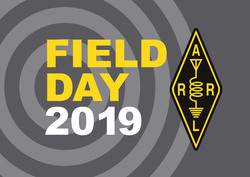 entries that are missing the required list of call signs by band/mode (also known as a "Dupe Sheet"), or a Cabrillo file.
entries that are missing the required list of call signs by band/mode (also known as a "Dupe Sheet"), or a Cabrillo file..JPG)
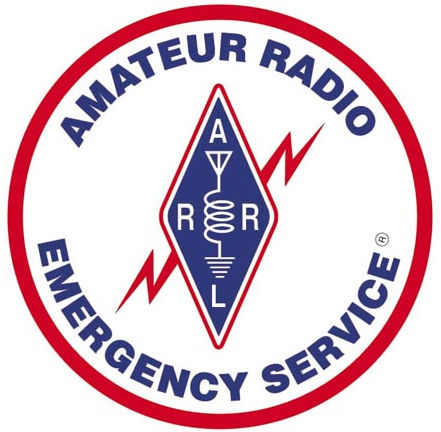 ed the Eastern Kern County ARES Net, and, as members assessed their own situations and were able to participate, activity grew on the Eastern Kern County ARES Emergency Net. Others filled in as Net Control Stations a the activation progressed.
ed the Eastern Kern County ARES Net, and, as members assessed their own situations and were able to participate, activity grew on the Eastern Kern County ARES Emergency Net. Others filled in as Net Control Stations a the activation progressed.
.jpg) dollars," ARDC said that its Board of Directors had agreed to keep the exact figure confidential for now, "to avoid adversely influencing others buying and selling addresses."
dollars," ARDC said that its Board of Directors had agreed to keep the exact figure confidential for now, "to avoid adversely influencing others buying and selling addresses." If you're a newly licensed Amateur Radio operator, chances are you have lots of questions. This biweekly podcast has answers! So Now What? offers insights from those who've been just where you are now. New episodes will be posted every other Thursday, alternating new-episode weeks with the
If you're a newly licensed Amateur Radio operator, chances are you have lots of questions. This biweekly podcast has answers! So Now What? offers insights from those who've been just where you are now. New episodes will be posted every other Thursday, alternating new-episode weeks with the  "Through extensive research, we've learned that they come to Amateur Radio hoping to learn how to use it in aid of their communities, and for enhancing the fun they're already having while camping, hiking, or doing other outdoor activities," President Roderick said. "We've also learned that they've been discouraged by the difficulty of finding information and help that would allow them to get involved." He said ARRL has turned its attention toward those hams over the past year, and he directed readers to read about ARRL's new Lifelong Learning Department, which, he said, "will create learning materials for Amateur Radio enthusiasts at all levels of knowledge -- but especially for the beginners."
"Through extensive research, we've learned that they come to Amateur Radio hoping to learn how to use it in aid of their communities, and for enhancing the fun they're already having while camping, hiking, or doing other outdoor activities," President Roderick said. "We've also learned that they've been discouraged by the difficulty of finding information and help that would allow them to get involved." He said ARRL has turned its attention toward those hams over the past year, and he directed readers to read about ARRL's new Lifelong Learning Department, which, he said, "will create learning materials for Amateur Radio enthusiasts at all levels of knowledge -- but especially for the beginners."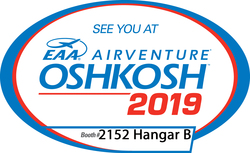 marks the 50th anniversary of
marks the 50th anniversary of 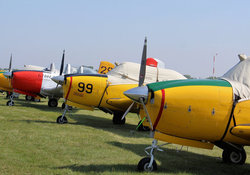
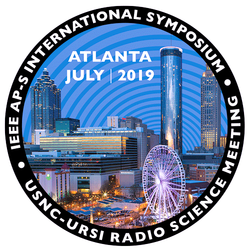 and many visited ARRL's exhibit to learn more about Amateur Radio. Three active Amateur Radio stations were available via remote internet connections.
and many visited ARRL's exhibit to learn more about Amateur Radio. Three active Amateur Radio stations were available via remote internet connections..jpg)
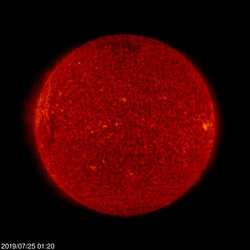 Predicted planetary A index is 5 on July 25; 8 on July 26 - 27; 5 on July 28 - August 3; 8, 15, 15, and 8 on August 4 - 7; 5 on August 8 - 18; 8 on August 19 - 20; 5 on August 21; 8 on August 22 - 24; 5 on August 25 - 30; 8, 15, 15, and 8 on August 31 - September 3, and 5 on September 4 - 7.
Predicted planetary A index is 5 on July 25; 8 on July 26 - 27; 5 on July 28 - August 3; 8, 15, 15, and 8 on August 4 - 7; 5 on August 8 - 18; 8 on August 19 - 20; 5 on August 21; 8 on August 22 - 24; 5 on August 25 - 30; 8, 15, 15, and 8 on August 31 - September 3, and 5 on September 4 - 7.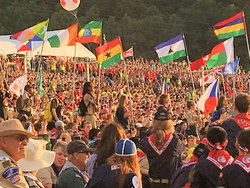 opportunity, will gather at the World Scout Jamboree's NA1WJ to pose questions to astronaut Drew Morgan, KI5AAA, at the helm of OR4ISS on the ISS. The contact is set to take place on Saturday, July 27, at 1827 UTC. Morgan is an assistant scoutmaster. The contact will be enabled via a "telebridge" between NA1SS and ON4ISS at AMSAT-Belgium. The event will be streamed live via
opportunity, will gather at the World Scout Jamboree's NA1WJ to pose questions to astronaut Drew Morgan, KI5AAA, at the helm of OR4ISS on the ISS. The contact is set to take place on Saturday, July 27, at 1827 UTC. Morgan is an assistant scoutmaster. The contact will be enabled via a "telebridge" between NA1SS and ON4ISS at AMSAT-Belgium. The event will be streamed live via  "We don't see how the Amateur Radio Service...and the Aeronautical Service could co-exist without operating restrictions," USKA said in a report that asks, "Is the 2 Meter Band Threatened?" The article's author, Bernard Wehrli, HB9ALH, advised radio amateurs to keep using 2 meters and to avoid taking on the issue individually.
"We don't see how the Amateur Radio Service...and the Aeronautical Service could co-exist without operating restrictions," USKA said in a report that asks, "Is the 2 Meter Band Threatened?" The article's author, Bernard Wehrli, HB9ALH, advised radio amateurs to keep using 2 meters and to avoid taking on the issue individually. The International Telecommunication Union (
The International Telecommunication Union (.jpg) Online registration is now available for
Online registration is now available for 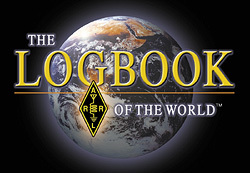 ARRL's Logbook of The World has been updated to embrace FT4 contacts for the Digital Worked All States award. This follows the WSJT-X Development Group's July "general availability" release of WSJT-X 2.1.0. No other endorsements are under consideration at this time. LoTW users are currently able to upload all FT4 contacts they have made. While the FT4 Digital WAS Award Endorsement functions are now active, award processing and fulfilment remain pending the availability of the new endorsement sticker. Watch ARRL News for this and other updates.
ARRL's Logbook of The World has been updated to embrace FT4 contacts for the Digital Worked All States award. This follows the WSJT-X Development Group's July "general availability" release of WSJT-X 2.1.0. No other endorsements are under consideration at this time. LoTW users are currently able to upload all FT4 contacts they have made. While the FT4 Digital WAS Award Endorsement functions are now active, award processing and fulfilment remain pending the availability of the new endorsement sticker. Watch ARRL News for this and other updates.







